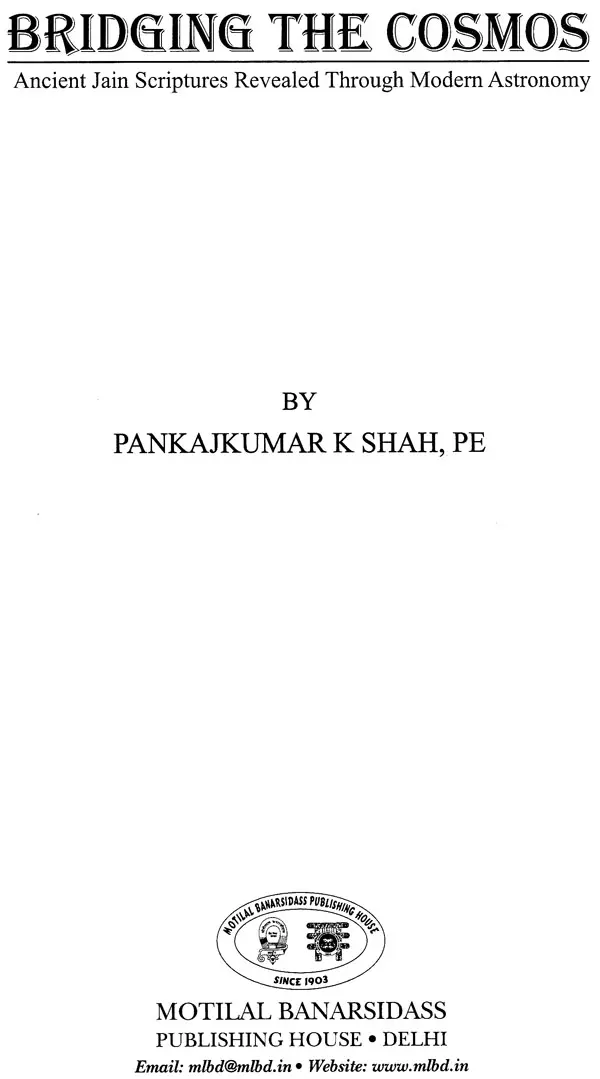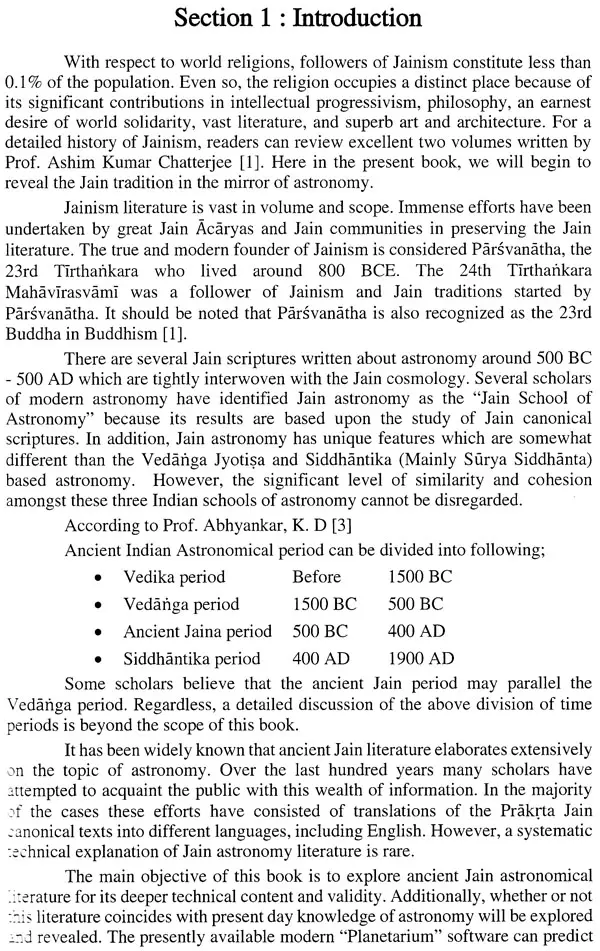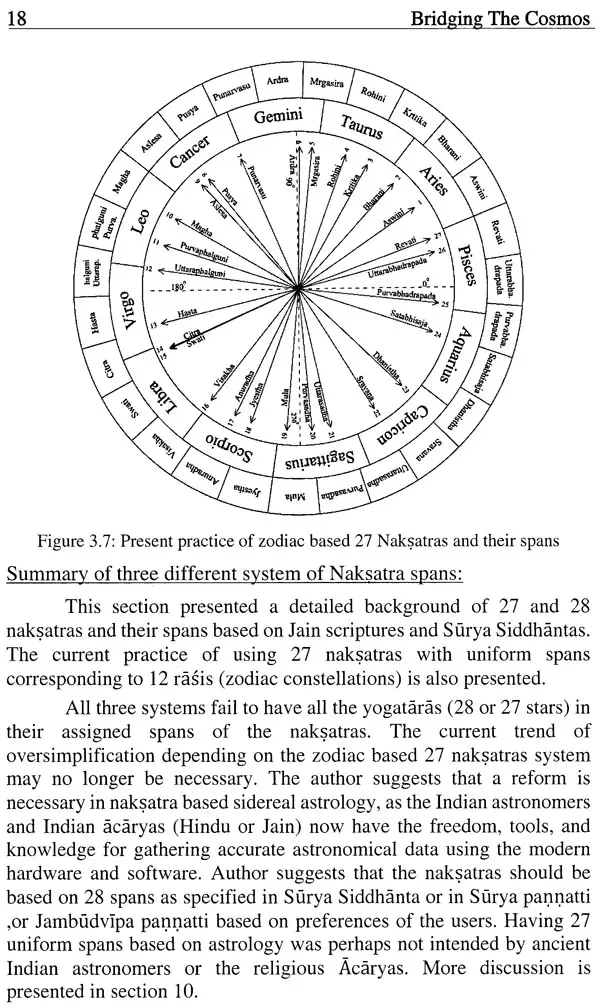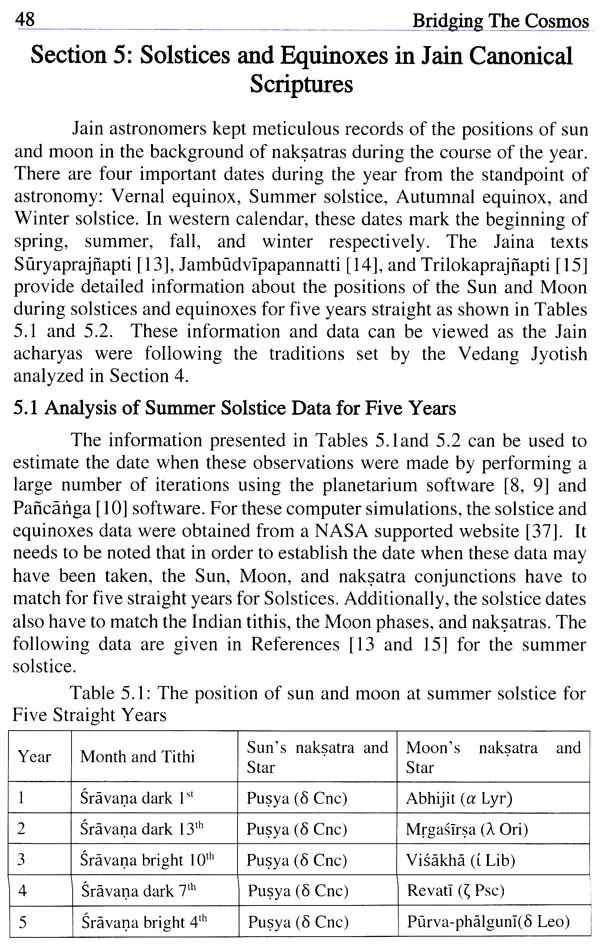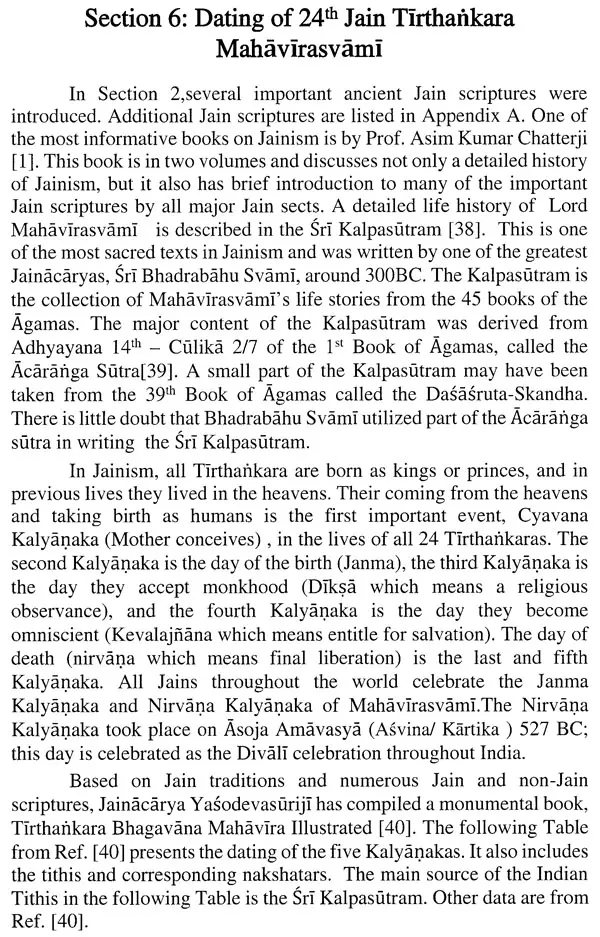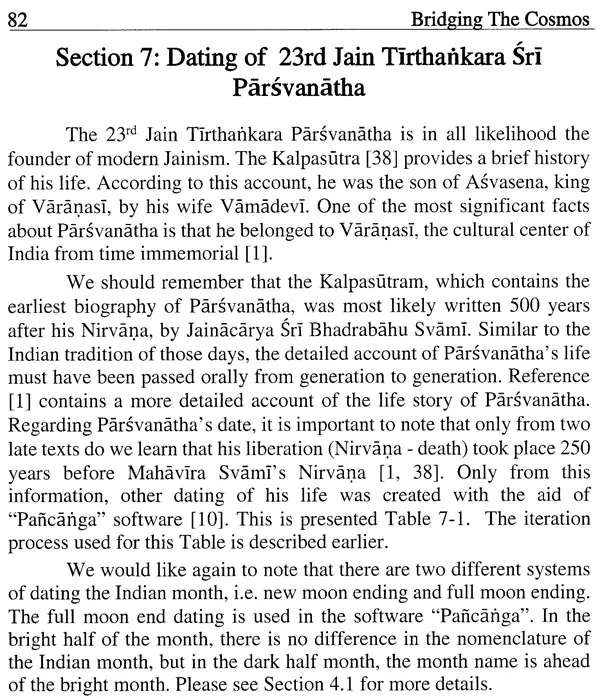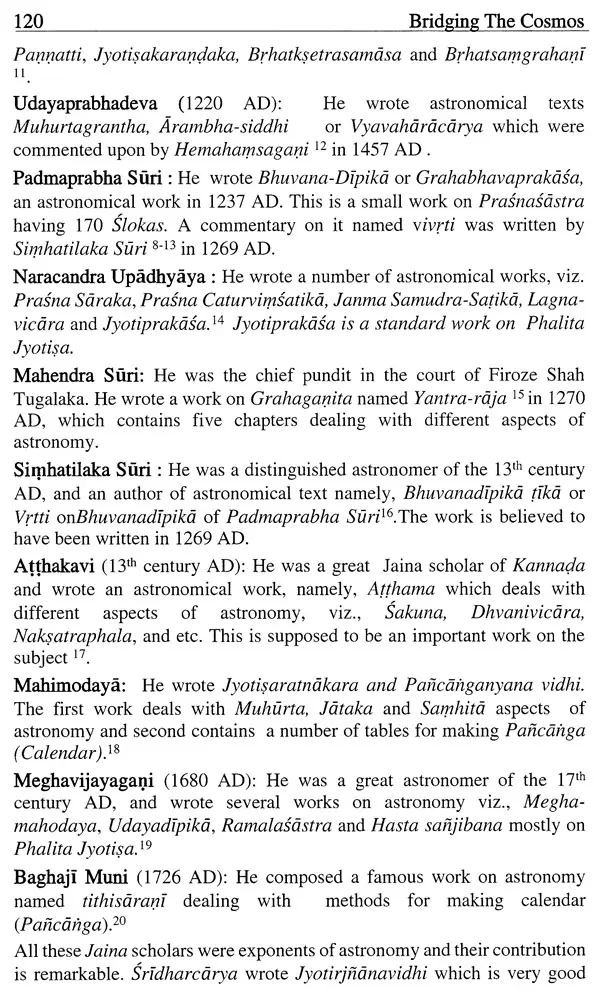
Bridging The Cosmos - Ancient Jain Scriptures Revealed Through Modern Astronomy
Book Specification
| Item Code: | UAU077 |
| Author: | Pankaj Kumar K Shah, PE |
| Publisher: | MOTILAL BANARSIDASS DELHI |
| Language: | English |
| Edition: | 2022 |
| ISBN: | 9789394201712 |
| Pages: | 133 |
| Cover: | PAPERBACK |
| Other Details | 9.50 X 6.50 inch |
| Weight | 210 gm |
Book Description
Shri Pankaj kumar Shah has analyzed the problem and has tried to redefine the boundaries of the nakshatras. Pioneering as the work is, the details of which can be found in the 10 section of the book. The importance and the significance of Shri Pankaj kumar Shah's work both for the ancient Indian tradition and in particular to the Jain tradition cannot be overstated. This work will be a guiding light for future investigators for a long time to come. The author welcomes this path breaking contribution and wishes all the success to Shri Pankajkumar Shah. May Shri Pankaj kumar Shah bring forth many more books and further our knowledge and reveal the hidden treasures of astronomy of the Jain tradition.
I am honored to write a foreword to the book "Bridging the Cosmos" by Shri Pankaj kumar Shah. It is a groundbreaking contribution to the astronomical literature of India which connects ancient Jain tradition to modern astronomy. It will certainly inspire the younger generation to delve deeper into understanding ancient tradition. The ancient Jain canonical literature contains a wealth of astronomical information, yet much of it is available only in Prakrit and very little is available in English. Furthermore, a systematic study of ancient astronomy in the Jain tradition is rare. The main objective of this book is to explore this wealth of astronomical information with the help of modern planetarium software. The objective has largely been achieved, and this work will help lead the way to the goal implied in the more ambitious title. Shri Pankaj kumar Shah presents an outline of the topics covered in the various sections of the book, follows the outline faithfully, and carries out his program admirably. The nakshatra system is unique to the Indian tradition of astronomy. As such, there have been sustained efforts by some well-known Western scholars and their followers to deny the antiquity and the indigenous nature of this tradition. The author uses several planetarium software products including the Stellarium and SkyMap Pro, supplemented by the 'panchang' software of Kyoto University of Japan in his work. He presents the data on nakshatras from vedanga jyotish, carries out a large number of iterative simulations using the planetarium software, and concludes that the Indian astronomy was fully developed before 1285 BCE, which he considers to be lower limit of the Vedanga Jyotisha date and that in fact it could be much older. He presents the data on nakshatras from all the canonical Jain literature. He has verified the Summer Solstice and Vernal equinox data from five year cycles, the data on conjunction of Sun, Moon and nakshatras, and observes that (i) these data are highly accurate, (ii) the data also match the Indian tit his to a high degree of confidence and (iii) these data may have been collected between 10th century BCE and 9th century BCE. This is an important point as this provides the direct evidence for the observational astronomy in ancient India.
Since childhood, my parents told me that the Jain scriptures, The Agamas, have data on practically on every subject. This included an enormous variety of topics from types of animal and plant life, logic, culture, and a history of people living around 500BC. More strikingly, it was said that it has an extensive amount of mathematics and astronomy intricately woven with Jain cosmology. This lead me to organize the first International Symposium on Jainism and Mathematics at MIT, Boston'. In the last hundred years many Jain, non-Jain, and Western mathematics, scholars, and professors have performed significant research on ancient Jain scriptures composed between 500BC-1000AD. The results have been presented in many technical conferences and journals. It is anticipated that many newly researched materials in the field of Jain mathematics will be presented in the forthcoming symposium at MIT, Boston in June 2021. I had come across several books on Jain astronomy before, and they were mostly translations of the Jain canonical scriptures in different languages with a focus on the development of geometry and mathematics in India. However, these books had no technical discussion about the astronomy. During my recent efforts in organizing the aforementioned symposium on Jainism and Mathematics, I came across a book called "Zero Point of Jain Astronomy" by Dr. Raja Ram Mohan Roy as the peer reviewer. This was the first book I had read which included a technical discussion on astronomy. This book gave me an excellent starting point. Many of the input Tables contained in this text are directly taken from this book. Almost fifteen years ago in 2006, I had met Prof. Narhari Achar who presented a paper called "Date of the Mahabharata War" at the University of Massachusetts, Dartmouth. At that time, I felt compelled do something comparable to Prof. Achar but for dating the 23rd Jain Tirthankara Sri Parsvanatha. A culmination of above events has resulted in this book. Here, I have extracted the majority of all data related to Nakṣatras (asterisms) from major Jain canonical scriptures dating back to 500BC-300BC, and I have examined the validity of these data using state of art astronomy software. I found it to be remarkable when I found out that astronomy data such as solstices and equinoxes presented in Jain scriptures were highly accurate and indeed met the scrutiny of the modem software.
**Contents and Sample Pages**
